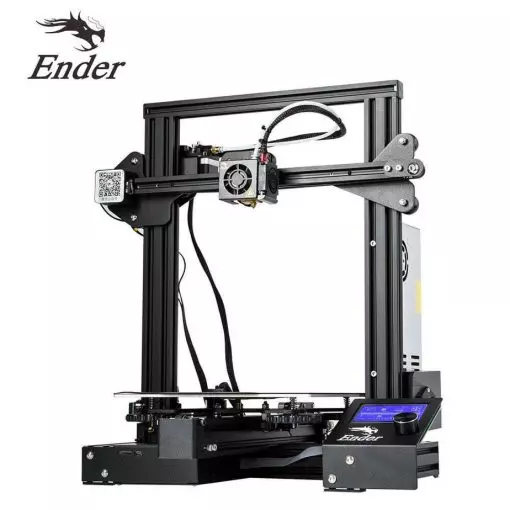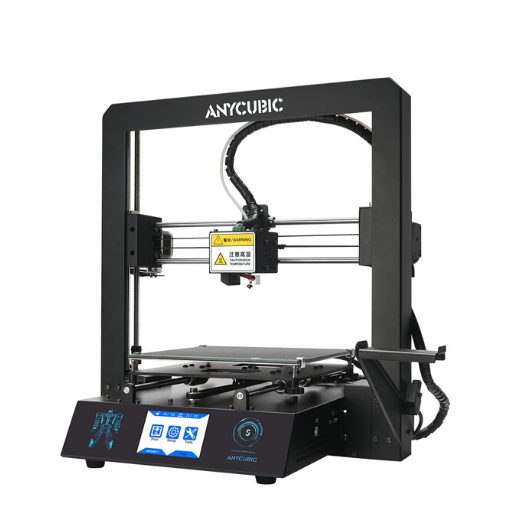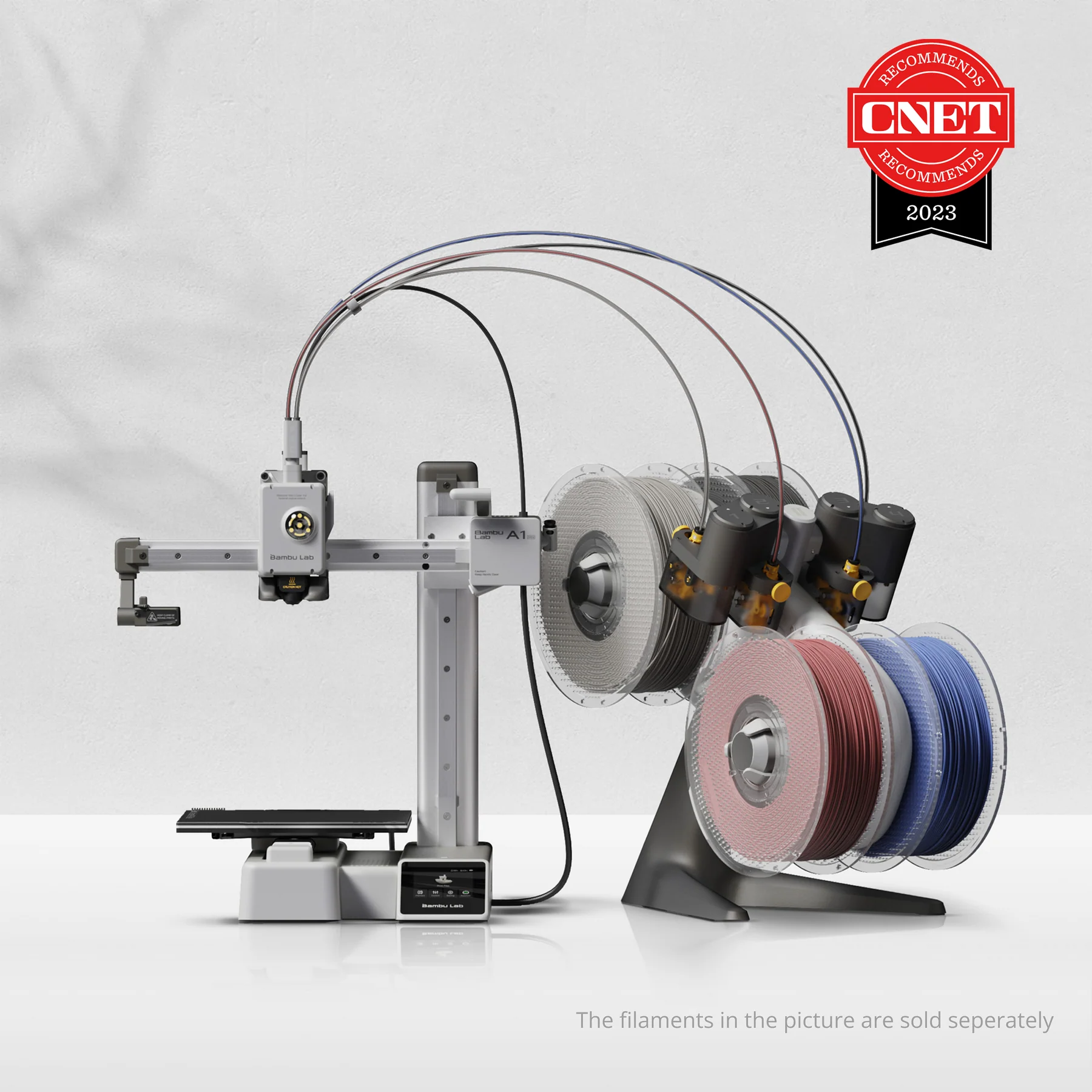Compare Ender 3 vs Mega S vs A1 Mini
Comparison between the best 3D printers
Choose the best 3D printer at the best price. The cheapest 3D printers are here.
Buy a 3D printer here with 3D Fila.
 |
 |
 |
|
| Model | Ender 3[BUY Ender 3] |
Mega S |
A1 Mini |
| Printing Material | Filament | Filament | Filament |
| Estimated price | $210,00 | $149,00 | $549,00 |
| Fabricante | Creality 3D | Anycubic | Bambu Lab |
| Release Year | 2018 | 2019 | 2023 |
| Print Volume [mm] | 220x220x250 | 210x210x205 | 180x180x180 |
| Printer Size [mm] | 440x440x465 | 405x410x452 | 315x347x365 |
| Weight [kg] | 6,62 | 14,5 | 5,5 |
| Power Loss Recovery | NO | YES | YES |
| Enclosed printer | NO | NO | NO |
| Bed Leveling | Manual | Manual | Automatic |
| Filament End Sensor | NO | YES | YES |
| Bed type | Heated | Heated | Heated |
| Power supply system | Bowden | Bowden | Direct Drive |
| Standard nozzle | 0,4 | 0,4 | 0,4 |
| Maximum Nozzle Temperature [°C] | 255 | 260 | 300 |
| Maximum Bed Temperature [°C] | 110 | 110 | 80 |
| Maximum printing speed [mm/s] | 180 | 100 | 500 |
| Filament holder | YES | YES | YES |
| Camera for supervision | NO | NO | YES |
| Recommended filaments | PLA, TPU, ABS, PETG | PLA, TPU, ABS, PETG | PLA, PETG, TPU, PVA |
| Recommended slicers | Cura, Simplify, Slic3r | Cura, Simplify, Slic3r | Bambu Studio, Super Slicer, Cura, Prusa Slicer, Orca |
| Maximum Resolution [mm] | 0,1 | 0,1 | 0,1 |
| Processor | 8 bits | 8 bits | 32-bit Silenciosa |
| Display | Mono | Touchscreen TFT 2,8'' | Touchscreen 2,4'' |
| Power Supply | 24V / 270W | 12V / 300W | 150 W |
| Connectivity | SD / USB | SD / USB | Wifi, Bambu bus, Cartão SD |
| Operating systems | Windows, Mac, Linux | Windows, Mac, Linux | Windows, Linux, Macbook |
| Date of registration in the system | 2021-04-13 | 2021-04-15 | 2024-04-10 |
| Release date | 2018 | 2019 | 2023 |
| Extra features | The Ender 3 V1 is a DIY assembly 3D printer, a sales leader since 2017, standing out for its cost-benefit. With a wide printing capacity, it has a CNC machined structure for precision and stability. It offers high-precision prints with low noise, thanks to its innovative V-profile and pulleys. It has a self-adhesive magnetic platform for easy removal of models and excellent adhesion. The Ender 3 heats up quickly, reaching 100°C in 5 minutes, ideal for agile prints. It includes protection against power failures, allowing you to resume printing after interruptions, saving time and material. | The Anycubic Mega S offers a printing platform with excellent adhesion, easy removal after cooling. It has a filament sensor for a better experience with flexible materials and a multilingual and intuitive color touchscreen. Assembly is quick, requiring only 8 screws and 3 connections. It has a large build volume (210 x 210 x 205 mm), high positioning accuracy and supports a variety of materials, including TPU, PLA, ABS and wood. It stands out for its solid metal structure, superior stability, high-quality printing with layer resolution of up to 50 microns, Ultrabase for easy adhesion and removal of parts, resumption of printing after power outage, high-quality extruder for flexible filaments, suspended filament support and stable structure that reduces shaking, improving printing quality. | The Bambu Lab A1 Mini stands out not only for its impressive speed and automatic calibration, but also for its multi-color printing capability thanks to AMS Lite. This innovative system makes multi-color printing easy, making it accessible to everyone. AMS Lite, specific to the A1 Mini, supports up to four different materials simultaneously, providing creative freedom without complications. With comprehensive sensors for energy monitoring and recovery, a camera for timelapses and Wi-Fi control, the A1 Mini and AMS Lite together offer an intuitive and advanced 3D printing experience, ideal for materials such as PLA, PETG and TPU, and designed for simplicity and fast maintenance with quick-change nozzles. |
| Support for multiple colors and materials (AMS and CFS) | NO | NO | YES |
Notes * |
|||
| Cost-benefit | 6 / 10 | 7 / 10 | 7 / 10 |
| Hardware | 0.5 / 10 | 2 / 10 | 4.8 / 10 |
| Screen | . | . | . |
| Print volume | 3 / 10 | 3 / 10 | 3 / 10 |
| Performance | 1 / 10 | 1 / 10 | 4 / 10 |
| [BUY Ender 3] |
Conclusion |
| In conclusion, choosing the best 3D printer among the Ender 3, Anycubic Mega S, and Bambu Lab A1 Mini largely depends on your specific needs, budget, and printing goals. The **Ender 3** is a cost-effective choice, known for its solid performance and extensive support for various filaments. It is suitable for beginners who are willing to engage in some DIY assembly and manual bed leveling. While it offers a decent print volume and quality, it lacks advanced features such as power loss recovery and a filament sensor. Its excellent cost-to-benefit ratio makes it ideal for those looking to start their 3D printing journey without a significant investment. The **Anycubic Mega S**, at a slightly higher price point, provides improved stability and ease of use with its Quick assembly and features like a filament sensor and a user-friendly touchscreen. Its solid construction and better printing capabilities make it a good middle-ground option for users interested in a bit more sophistication while still remaining cost-effective. However, it still lacks some of the more advanced functions found in newer models. On the other hand, the **Bambu Lab A1 Mini** stands out with its automatic calibration, rapid printing speeds, and multi-color capabilities thanks to the AMS Lite system. Although it commands a higher price, its features cater to users looking for advanced functionalities and a modern 3D printing experience. The A1 Mini is perfect for more serious hobbyists or professionals who value speed and advanced materials handling. In summary, for budget-conscious beginners, the Ender 3 remains an excellent entry-level option. The Anycubic Mega S caters to users seeking robust features and a user-friendly experience, while the Bambu Lab A1 Mini is the best choice for those willing to invest in cutting-edge technology and higher performance capabilities. Your decision should ultimately align with your individual requirements and how much you are willing to spend. |

